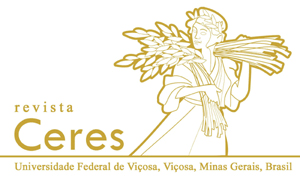ABSTRACT
The intensive use of land based on non-conservation practices contributes to the reduction of soil quality. In this sense, the objective of this work was to evaluate the influence of farming systems on clayey Oxisol in the northwest of the state of Rio Grande do Sul on the epigeic fauna and on the soil physical properties. The treatments were composed of land use with Native field, Pasture, Transition, Crop and livestock integration, No-tillage and No-tillage system. The epigeic fauna was evaluated by the installation of seven traps per treatment. The physical properties of density, total porosity, microporosity, macroporosity and soil resistance to penetration were evaluated in samples with undisturbed structure at the 0- 0.07, 0.07-0.15 and 0.15- 0.22m depths, with four replicates. The results indicated that land use only for crop production reduced the abundance of organisms in comparison to the crop-livestock integration. The conversion of the Pampa Biome to the crop system altered its soil physical and biological properties with the transition area presenting intermediate characteristics to both environments. Grazing in the remaining areas of the Pampa Biome, without native field improvement strategies, reduced species abundance and richness. No-tillage and No-tillage system promoted the compaction of the 0.07 -0.15 m layer in a clayey Oxisol.
Keywords:
anthropic perturbations; soil quality; sustainability
